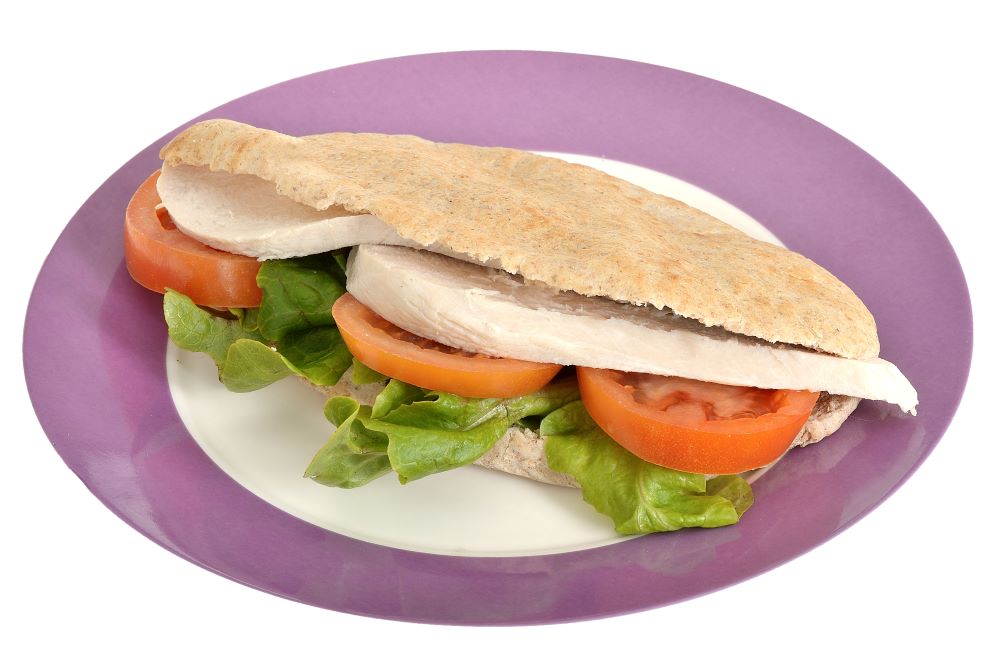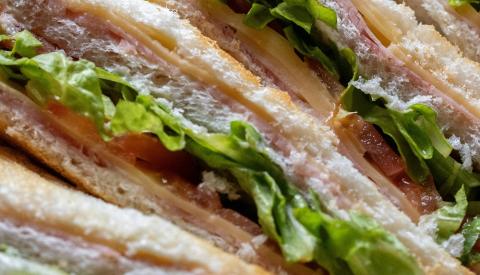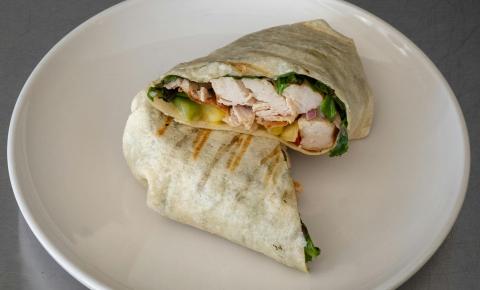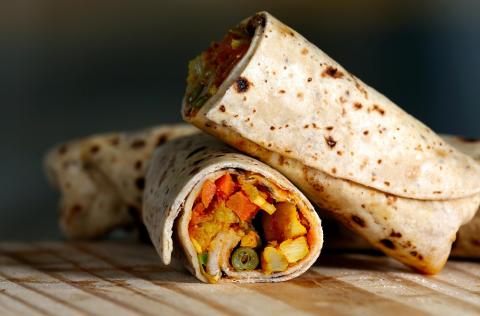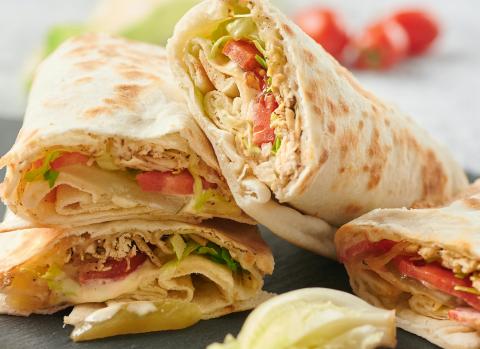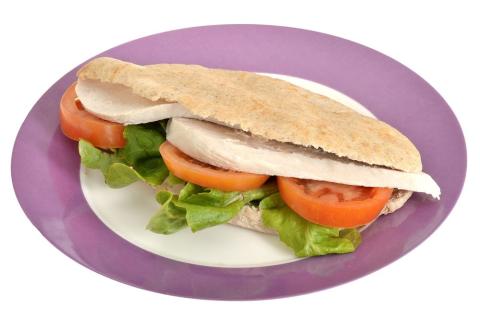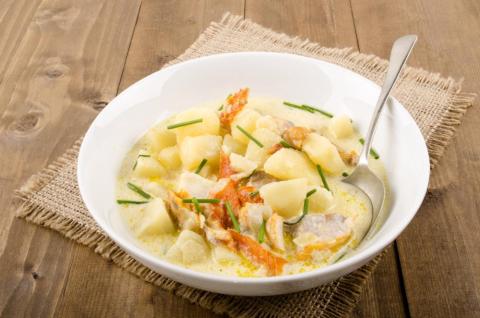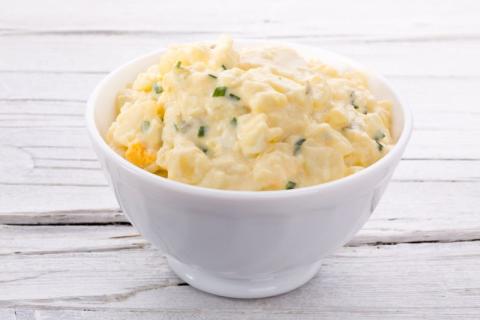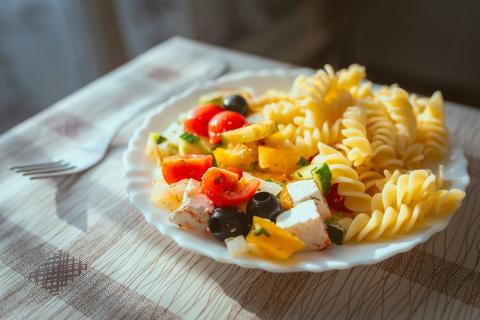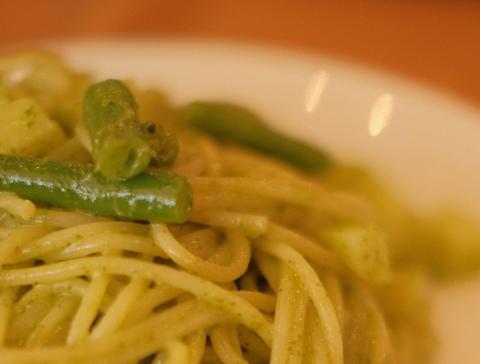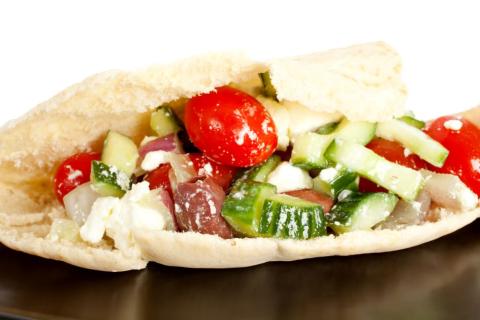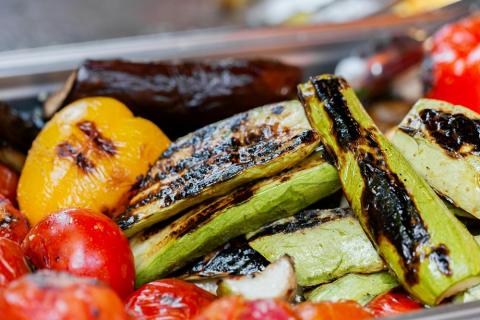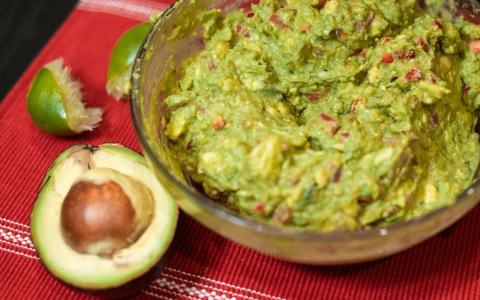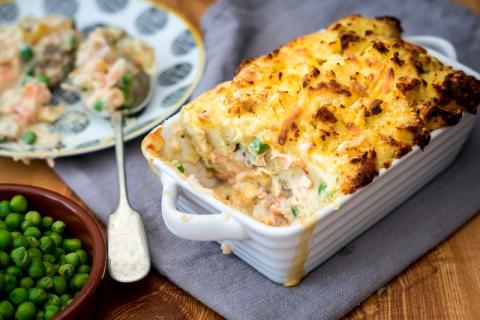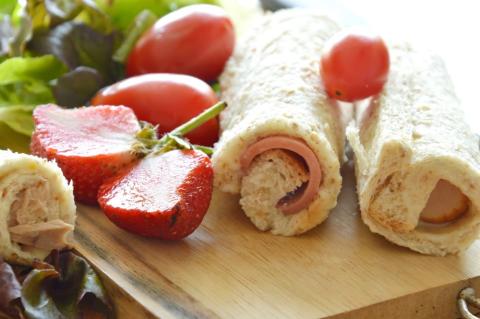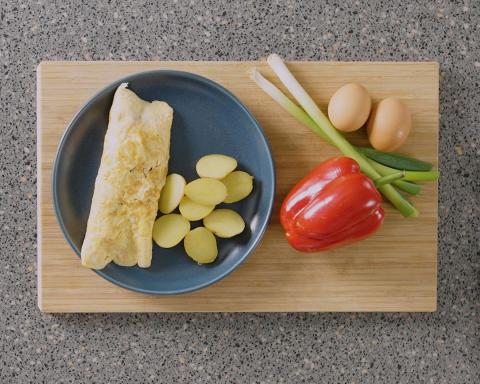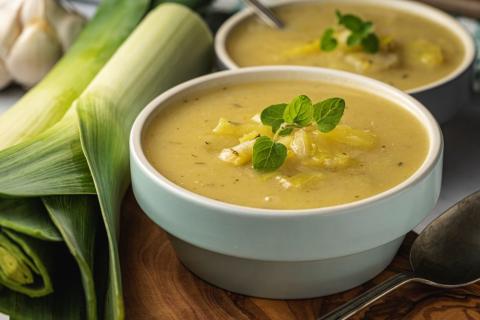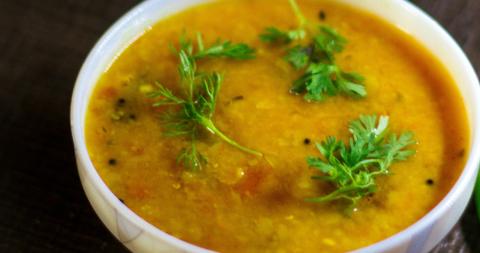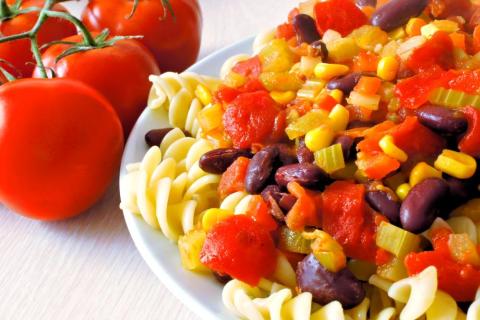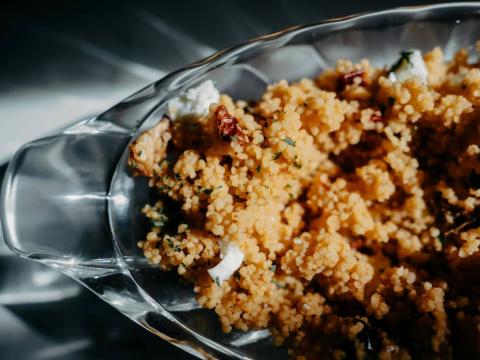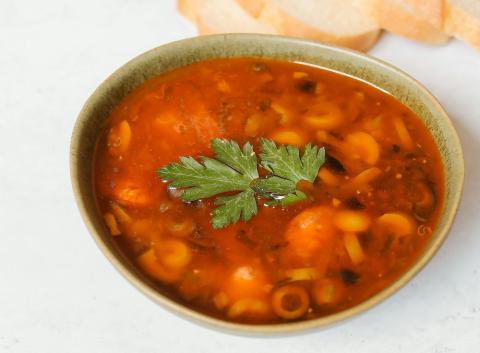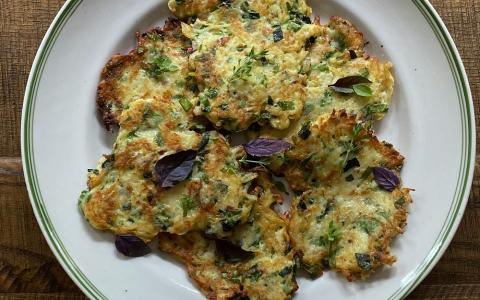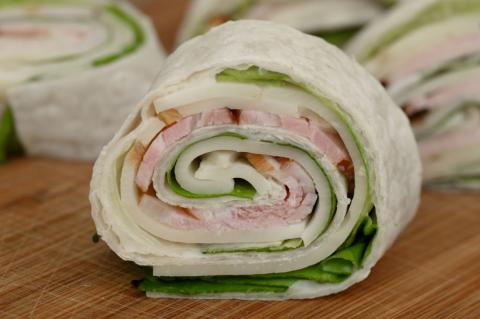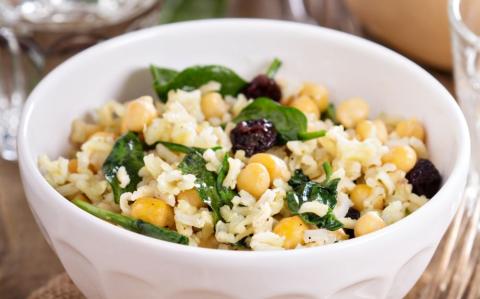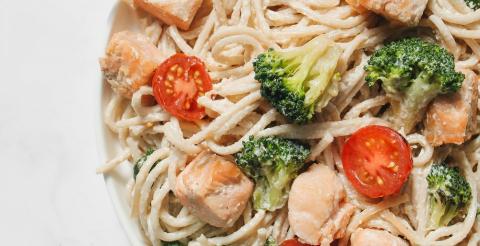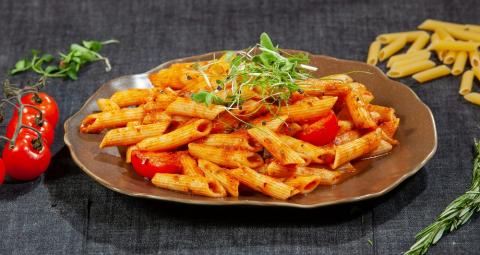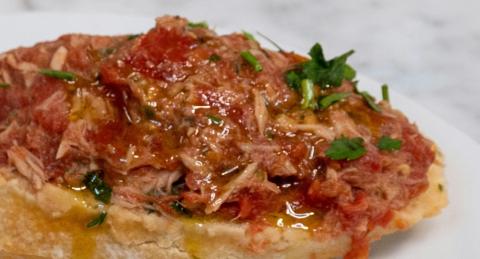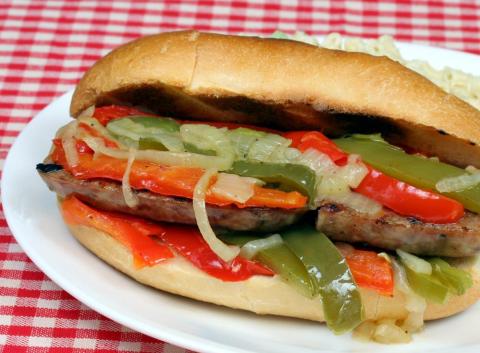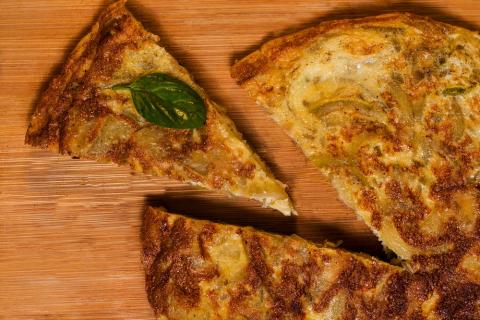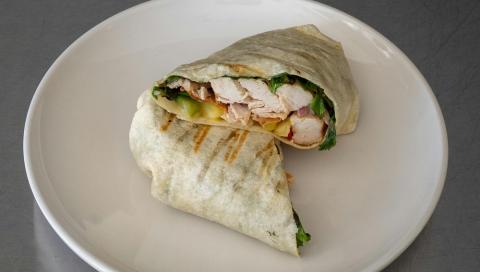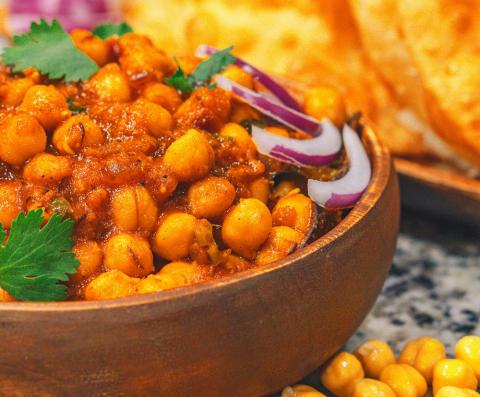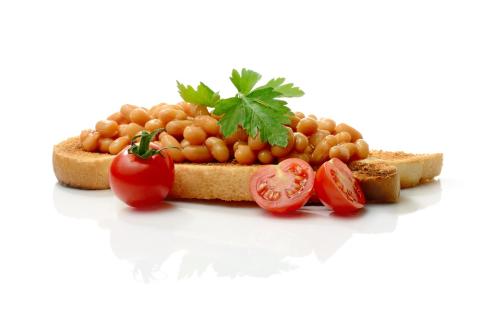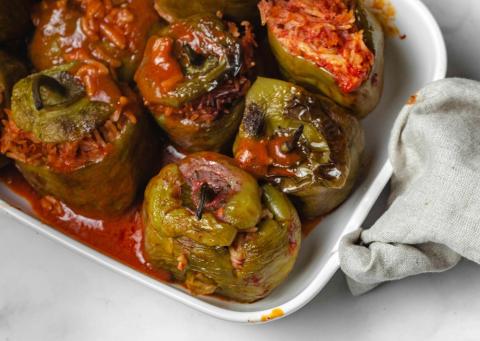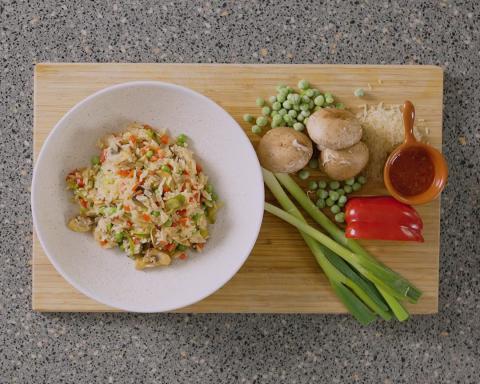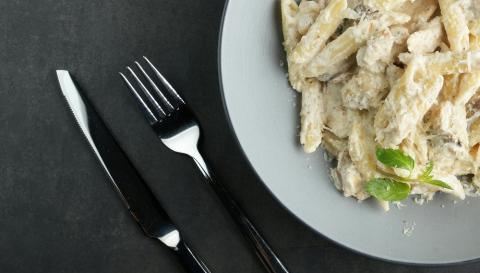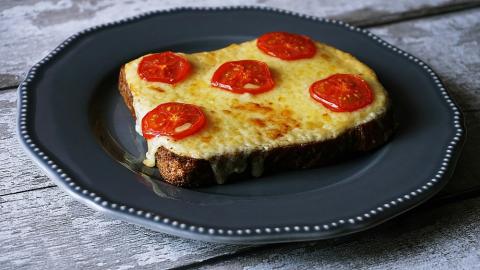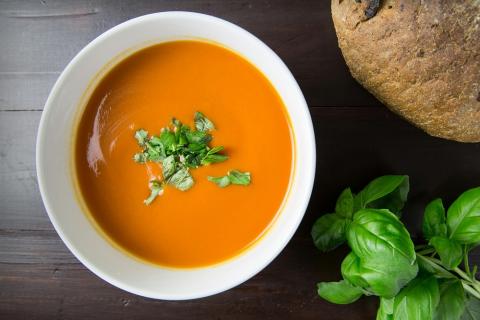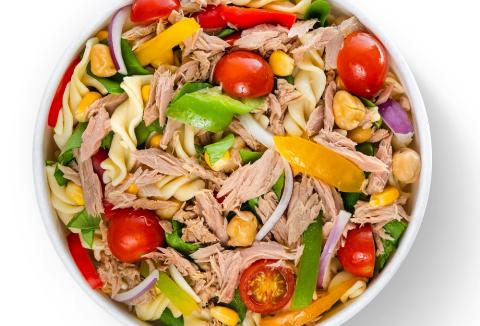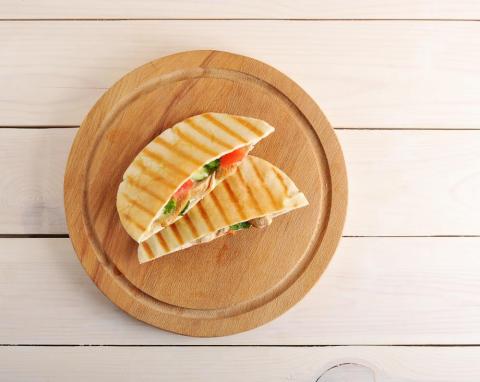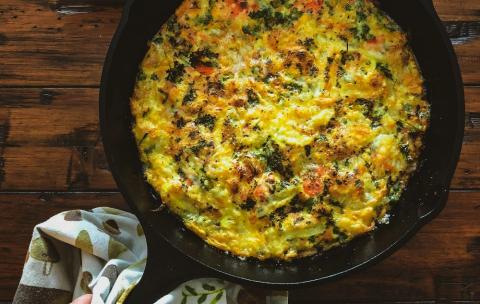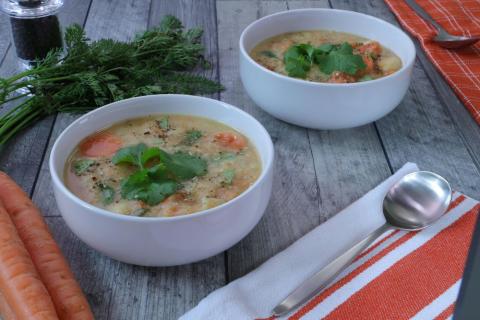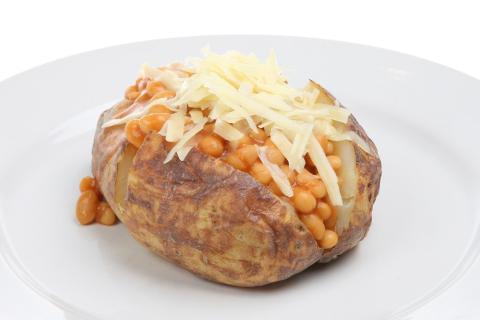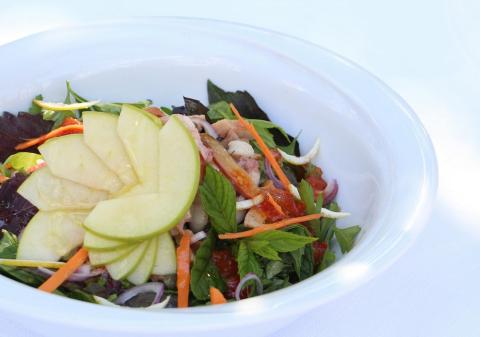- 1 (240g) Lettuce
- 4 or use cooked chicken (400g) Chicken Breasts
- 2 medium sized (170g) Tomatoes
- 16 Slices (96g) Cucumber
- ½ (80g) Red Pepper
- 4 wholemeal (380g) Pitta Breads
- 4 Tablespoons (120ml) Fat Free Salad Dressing
Ingredients
Allergy Disclaimer
Always check the label of each ingredient for allergy warnings.
Method
- If using raw chicken breasts place them in a pan with enough water to cover and bring to the boil. After 15- 20 minutes, drain the water and cool
- Wash the vegetables and shred the lettuce and slice the tomatoes, pepper and cucumber. Mix them together in a bowl with the dressing
- Once all the vegetables are well drained, thoroughly mix together then add dressing and mix throughly again
- Toast the pitta breads under the grill or in a toaster. Meanwhile cut the chicken into strips and add to the salad
- Slice the pittas to open them like a pocket and divide the mixture between them
Time Saver Tips
Use cooked chicken
Cost Saver Tips
Buy a whole chicken or use leftover chicken or turkey. Try the salad dressing from the greek pasta salad recipe rather than buying ready made.
Tips for Kids
Let them help to chop vegetables and mixing everything together. They can use their favourite colour pepper.
Nutritional Information
Based on a single serving of 371g (% of an adult's reference intake)
Energy
360 kcals ( 18 %)
1,499 kJ ( 18 %)
Fat
2.2 g ( 11 %)
Saturates
50.4 g ( %)
Sugar
8.9 g ( 10 %)
Salt
1.8 g ( 3 %)
Detailed nutritional information
| Per 100g | Per 371g serving | |
|---|---|---|
| Energy Kcals | 97 | 360 |
| Energy Kj | 407 | 1,499 |
| Protein | 11.8 g | 43.8 g |
| Total Fat | g | g |
| Saturated Fat | 0.6 g | 2.2 g |
| Carbohydrates | 13.6 g | 50.4 g |
| Total Sugars | 2.4 g | 8.9 g |
| NSP Fibre | 0.8 g | 3 g |
| Sodium | 199 mg | 738 mg |
| Salt | 0.5 g | 1.8 g |
Find out about nutritional labelling
Nutrition labels on the front of packaging
- Most of the big supermarkets and many food manufacturers display nutritional information on the front of pre-packed food.
- Front of pack nutrition labels provide information on the number of grams of fat, saturated fat, sugars and salt and the amount of energy (in kJ and kcal) in a serving or portion of a recipe.
- The labels also include information about reference intakes (expressed as a percentage) which are guidelines about the approximate amount of particular nutrients and energy required for a healthy diet.
- The colour coding tells you at a glance if the food has high (red), medium (amber) or low (green) amounts of fat, saturated fat, sugars and salt.
- The more greens on the label, the healthier the choice
- Amber means neither high nor low, so you can eat foods with all or mostly ambers on the label most of the time.
- Reds on the label means the food is high in that nutrient and these are the foods we should cut down on. Try to eat these foods less often and in small amounts.
Food shopping tips
If you’re trying to decide which product to choose, check to see if there's a nutrition label on the front of the pack. This will help you to quickly assess how your choices stack up. You will often find a mixture of red, amber and green colour coding for the nutrients. So when you're choosing between similar products, try to go for more greens and ambers and fewer reds if you want to make a healthier choice.
 Activities & Play
Activities & Play Behaviour
Behaviour Childcare
Childcare Development & Growing Up
Development & Growing Up Family, Friends & Relationships
Family, Friends & Relationships Feeding Your Baby
Feeding Your Baby Food & Eating
Food & Eating Health & Safety
Health & Safety Mental Health & Wellbeing
Mental Health & Wellbeing Money & Work
Money & Work Online Behaviour & Safety
Online Behaviour & Safety Pregnancy & First Days
Pregnancy & First Days School & Education
School & Education Sleep
Sleep

